Before flutter vs react native verdict we have to understand both the frameworks.
What is flutter?
Flutter is a comprehensive app software development kit that contains various widgets and tools. It is a portable UI toolkit. It allows users to create web or desktop apps that can run on IOS or Android devices. It was created by Google.
What is Flutter used for?
Flutter is a software that enables cross-platform app development. It allows users to build and install visually attractive applications for mobile phones (IOS, Android), desktops and web all through a single codebase.
Flutter’s desktop support
- When Flutter is used to develop desktop apps, you should compile the source code to a native macOS, windows or Linux desktop app.
- The desktop support of Flutter also offers plugins. Existing plugins can be installed that support Windows, macOS or platforms of Linux or a unique one can be created.
- The desktop support of Flutter is only available as a beta release, it consists of feature gaps. Developers can make attempts to try a beta snapshot or they can keep up with the latest changes to the supported desktop on the beta channel.
Flutter for Web
Flutter’s website delivers the exact experience on the mobile as well as on the web. Applications can be built from the same codebase on browsers, android, or IOS.
You can use Flutter’s website for the following:-
- Single Page Applications (SPA)- They load quickly and transmit data back and forth between internet services.
- Progressive Web Apps (PWA)- Apps built with Flutter deliver high-quality performance, offline support, and desired user environment, including Installation and tailored UX.
- Existing mobile applications- Flutter’s web support provides a delivery model that is browser-based for existing mobile apps.
More about Flutter
- It is Free.
- It is an open source.
- It provides its own widgets and tools that has the ability to perform efficiently and are fast, customizable and alluring.
- It is based on Dart- a fast programming language that is easy to learn.
- Flutter’s apps look great and are very easy to use, designed to provide the best customer experience.
- Flutter was built by Google- a very well-reputed Multinational company.
History of Flutter
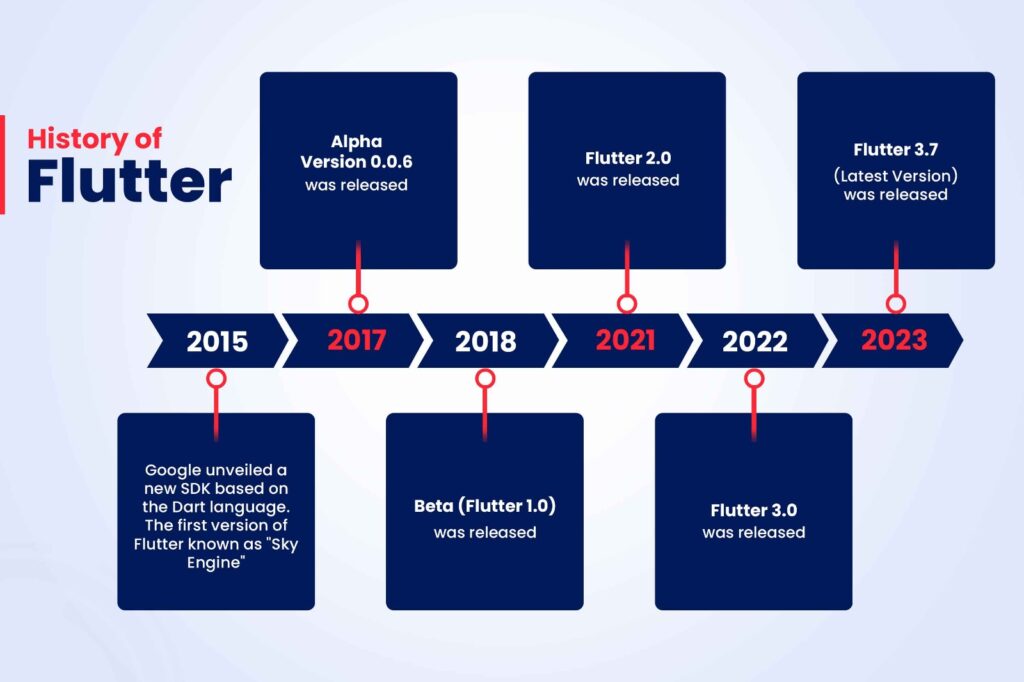
- The first beta release of Flutter took place in February 2018
- The second beta release took place in April 2018
- The third beta release took place in May 2018 (Flutter joined GitHub’s top 100 repos)
- Flutter released Preview 1 in June 2018
- Flutter released Preview 2 in September 2018
- Dart 2.1 released in November 2018
- Flutter 1.0 was released in December 2018 (a crucial milestone)
- Flutter 1.2 released in February 2019
- Flutter 1.5 released in May 2019
- Flutter 1.7 released in July 2019
- Flutter 1.9 released in September 2019
- Flutter 2.2 released in May 2021 (latest version)
- Flutter 3.0 was released in 2022
- Flutter 3.7 was released in 2023
Google kept updating the software rapidly, and the team has worked restlessly to create a very resilient and strong toolkit. They prioritized high-speed performance and enhanced quality. Flutter 2.0 includes many changes made after listening to the user’s feedback. The developers continue to contribute towards it improvements. It is the most popular software and it is very stable.
Popular Apps build with Flutter:-
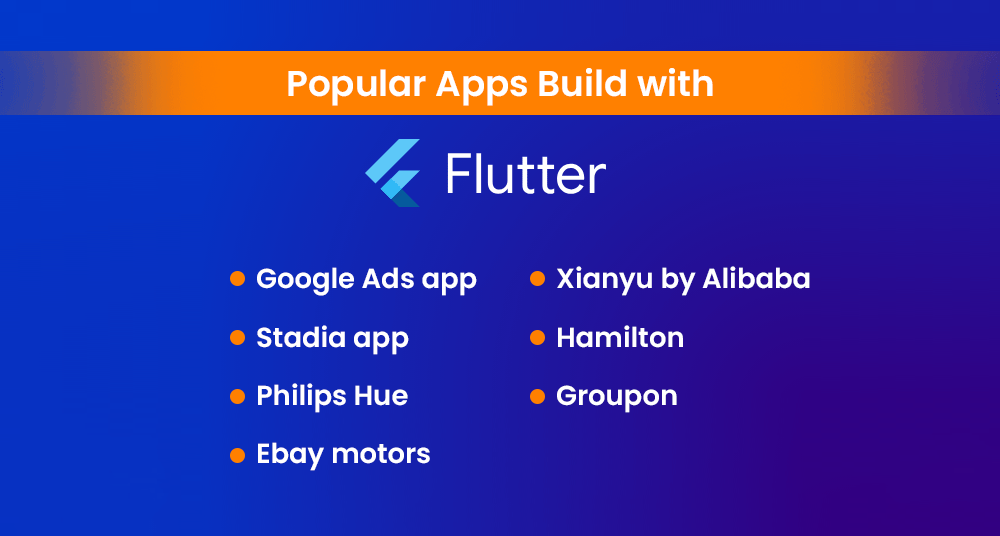
All of the apps listed below are available on the App Store as well as on Google Play.
- Google Ads app
- Stadia app
- Philips Hue
- eBay motors
- Xianyu by Alibaba
- Hamilton
- Groupon
What is React Native?
React Native is an open-source UI software that uses JavaScript.
What is React Native used for?
It is an effectual framework designed for
- Cross-platform app development
- Developing apps using JavaScript language
- Building apps for both Android and IOS through a single codebase
- Note- The apps that are created using React Native are not mobile apps. React Native has the exact same UI building blocks fundamental as Android and IOS apps. To develop apps with React Native, it is advised to use external libraries as it is the most well-suited
Who created React Native?
Facebook created React Native.
History of React Native
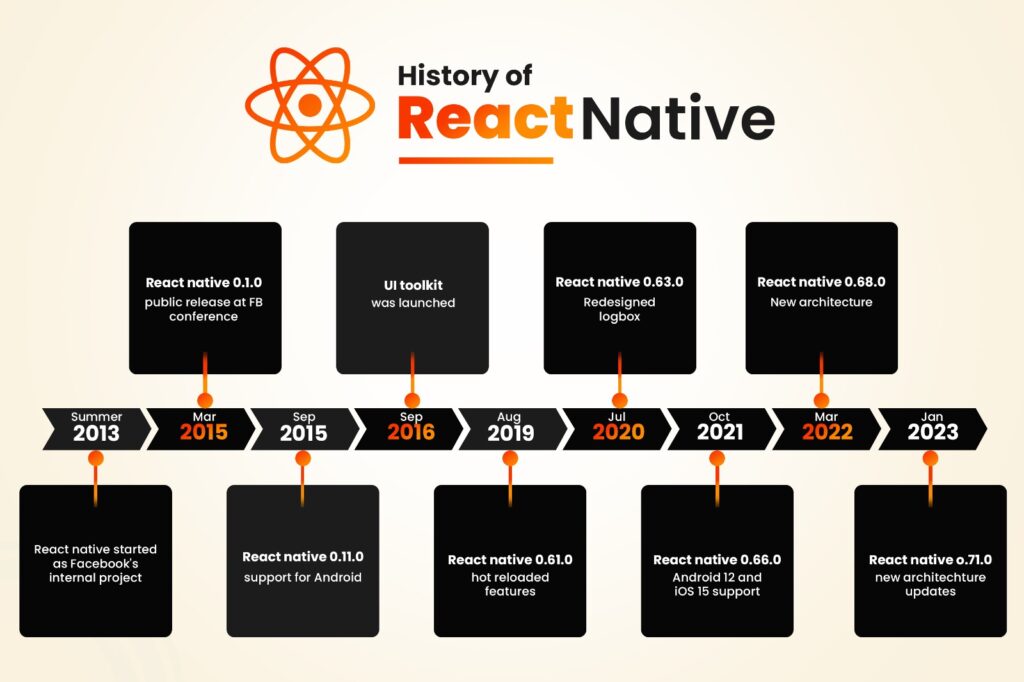
- In the Summer of 2013, React Native was just considered as Facebook’s internal project
- In January 2015, React Native’s Preview 1 released
- The official launch of React Native took place in March 2015
- React native is older than Flutter and therefore it has a bigger community. It has had more time to develop, improve and fix all underlying bug issues
Facebook is working on creating a lean core (reducing the size of an app by moving the components that are optional). It is also working on turbo modules, that is, improving the handling of native modules and it is working on redesigning the UI layer of the React Native fabric.
Popular apps build with React Native:-
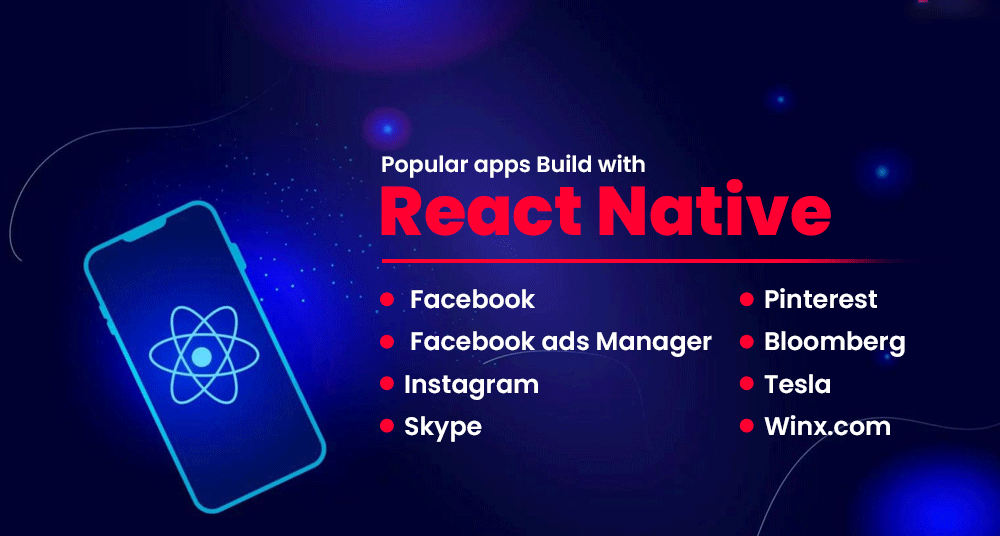
All of the apps listed below are available on App store as well as on Google Play.
- Facebook ads Manager
- Skype
- Bloomberg
- Tesla
- Winx.com
Pros of Flutter
Hot Reload
Flutter loads very quickly and offers a more fast and dynamic app development. This is one of the main reasons as to why it is rated so highly. It is easier to make changes to the codebase and they reflect instantly. This is the hot reload feature as it takes very few seconds to show. This helps in fixing bugs and adding new features. The hot reload feature comes in handy whenever the developer feels like experimenting with new designs.
Single codebase and two or more applications
Developers can write one codebase for two apps (android and iOS). Flutter has it’s own tools and widgets, so you can have the same app on two or more platforms.
Less testing
The process of quality assurance is sped up as the same application is available on both platforms, which means same tests are run saving up more time and energy.
Faster apps
Flutter apps are known for their fast and efficient performance. Flutter’s UI is so smooth because most of it’s work is done on the graphics processing unit.
Creative designs
As mentioned earlier, Flutter has it’s own set of tools and widgets. Flutter apps have a user-friendly UI which is a notable advantage that it has over React Native. Flutter was created so that a developer could create or customize his own widgets.
Same app UI on all devices
The new apps look exactly the same as the old ones on iOS and Android systems, so it always supports older devices as well.
Minimum Viable Product
it is the perfect option for a developer who wants to build a minimum viable product on his app.
Cons of Flutter
Size
React Native is a more experienced and established developer community. JavaScript is the preferred programming language and Dart is used less. The community of Flutter needs more time to understand it’s audience better and needs to attain more experience. Still, Flutter is expanding rapidly and there is a lot of excitement surrounding it’s toolkit.
Not as rich
Flutter is still new in the market, it still lacks some of the features that developers may take time to build.
Risk of platform
Without the support of Google, Flutter would be nothing. Flutter has created a prominent role for itself so the chances of Google withdrawing support is very low.
App’s size
The apps written of Flutter are larger than the ones that are written on Native. The team is working on solving this problem and reducing the size of the apps to some extent.
Pros of React Native
Fast coding
This is something that both Flutter and Native have in common. The hot reload feature allows a developer to introduce new codes directly into the app, hence, the changes can be seen instantly without having to rebuild the app. There is a feature known as fast refresh introduced in the 0.61 version of React Native which allows users to use hot reloading. This version is more resilient to making errors
One codebase and two or more applications
This feature is also the same as Flutter. Developers can write one code base for two apps (iOS and Android). JavaScript shares codes with web apps by creating components that are abstract and can be compiled to target platforms.
It uses the most popular programming language (JavaScript)
React Native uses JavaScript which developers prefer more. Dart is not so widely used.
Developer’s choice
React native allows developers to choose the solutions they want to use according to their preferences and requirements.
Relative maturity
React native was released before Flutter so it has had plenty of time to improve and fix its issues.
Easy to learn
React developers who use popular solutions and have a background in web development can work well with React Native without having to learn new patterns.
Cons of React Native
It isn’t native
Since it is a cross-platform solution, the performance or experience won’t be the same as native apps but it will be close.
Fewer components
React Native supports only the basic components out of the box. Flutter supports more as it is designed to have many more widgets.
Developer’s freedom
It can work against you just as easily as it can work for you. A developer needs to decide which global state management and navigation package to use which is ultimately very time-consuming.
Many abandoned packages
React Native has many libraries, and because of low quality, many of them have been abandoned.
Fragile UI
After every update, the app components are upgraded which can break the UI of the app but the chances of that happening are very rare. The app UI of Flutter is much more stable.
Apps are bigger
Apps that are written in React Native are bigger as they don’t have the ability to run JavaScript codes.
Other useful links-
Python vs PHP
Ionic vs React Native
The future of Flutter and React Native
More companies are attracted to Flutter. The team developers of Flutter are constantly making new changes and upgrading it to improve it’s performance and tools. Flutter enables users to create apps for desktops and websites as well. Thus, the future seems to be in the favour of Flutter.
The team of React Native is doing it’s best to improve the features of the software. They have made some changes to the core framework like improved time interaction, easier to manage, etc.
Developers often find Flutter more challenging than React Native due to its widget-centric approach, offering adaptability across iOS and Android. Flutter’s compiled code to x86 or ARM libraries enhances performance, making it faster than React Native. Flutter’s customization and bug-fixing speed surpass React Native. While both reduce costs, choosing between them depends on familiarity with Dart or JavaScript and design priorities, with Flutter excelling in visual appeal. Cross-platform developers benefit from weighing the pros and cons of each tool.




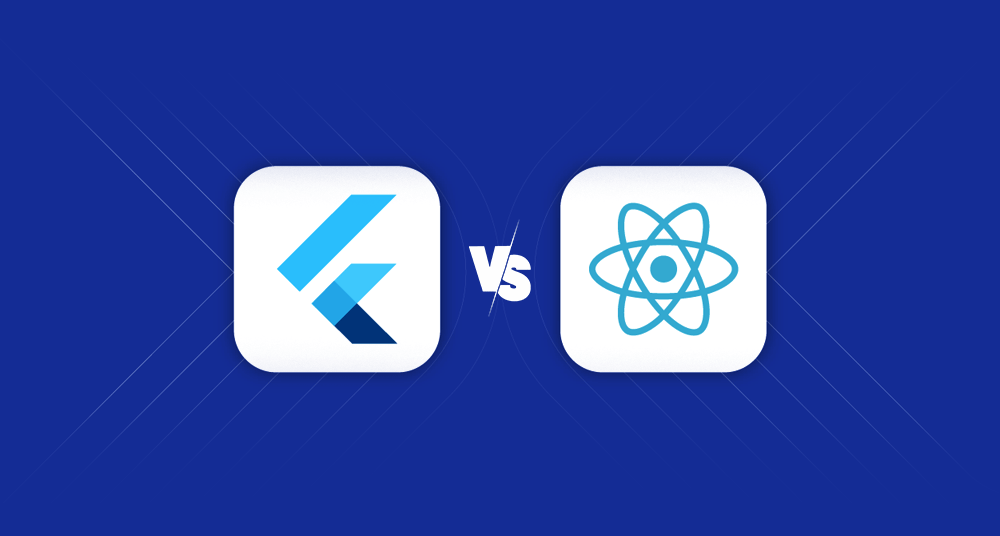

What do you think?
It is nice to know your opinion. Leave a comment.